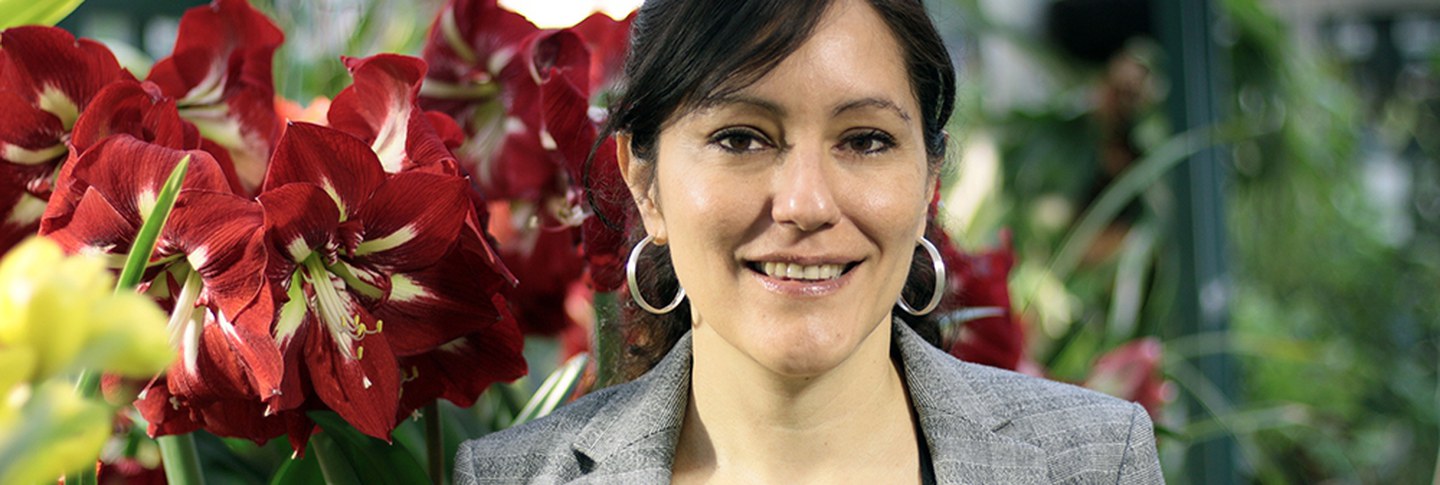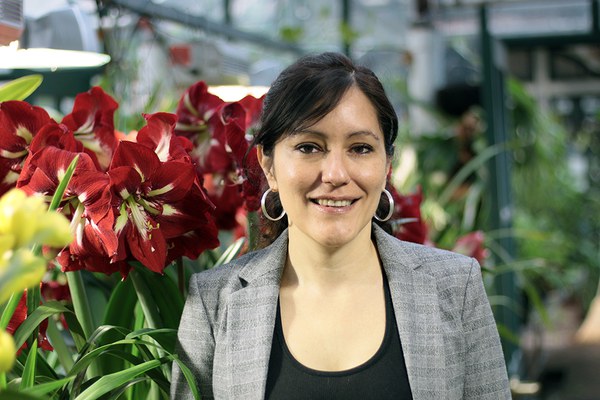Ximena Chávez Balderas, a PhD candidate in anthropology at Tulane University, is a Junior Fellow at Dumbarton Oaks in 2016–17. Her research has focused on funeral rites, the afterlife, and ritual sacrifice in Mesoamerica. Her recent research report, “The Offering of Life: Human and Animal Sacrifice at the West Plaza of the Sacred Precinct, Tenochtitlan,” discussed her fieldwork at the site and her attempts to analyze, via a complex system of classification, general trends in Mesoamerican sacrifice.
Brief Q&A with Ximena Chávez Balderas
What is the significance of the West Plaza as a site? Why is it unique?
The West Plaza was the main plaza of the Sacred Precinct, which means it was at the foot of the Great Temple, or the Templo Mayor, but it also housed several important small religious buildings, like the skull rack and the ballgame. Citizens on the West Plaza were able to view the rituals taking place on top of the Great Temple, so it was an important area in terms of rituals, performances, and public events.
The plaza is connected with sacrifice in a couple of ways. In addition to the skull rack and the ballgame, which is also connected to sacrifice, I suspect that the bodies intended for sacrifice were prepared somewhere near the skull rack. And besides that, all the bones and fragmentary materials were utilized to consecrate sacred spaces in the plaza—essentially, they were putting the energy contained in the bones into the buildings.
Your work utilizes a data-driven approach to studying sacrifice, attempting to find larger trends in the practice. Is this type of approach new?
Well, the Templo Mayor was excavated in 1978. Since then, we’ve seen the creation of the Urban Archaeology Program in 1991, but only in the past ten years have excavations of the main plaza really started up in a very systematized way. Some excavations were conducted there in the sixties, but they were more of a salvage operation—they were working very fast—so we don’t really have a lot of material or information on their work. Now we have a team led by Raúl Barrera, of the Urban Archaeology Program, that’s been working in different areas, but following a systematized methodology.
On the other hand, the Templo Mayor Project is a large, interdisciplinary team, with biologists, conservators, physical anthropologists, archaeologists, architects, and so on. So that’s the difference, really—when you’re working with these big datasets, you really need to be working with a team.
Overall, it’s a very exciting period in terms of archaeological discoveries, but of course it’s a challenge as well. I can remember my first day working with a particular offering that was composed of nine thousand animal bones, and I thought, “I don’t know what to do.” But I knew I had to organize my ideas, I knew I needed to design a methodology, and I knew that would take time. So it was a challenge, but I was happy I was the one doing it—right? Because it’s not only a challenge, it’s our heritage. It’s an enormous responsibility.
At your talk, there were a few questions about blood sacrifice, its significance, and the difficulty of studying it. I was wondering if you could talk about that.
In sacrificial practices, blood had a central role. It was a precious liquid, the essence of the body, and so it was used in a number of specific rituals—the nourishing of crops, for example. But of course, analyzing blood in an archaeological context is not only a challenge, it’s almost impossible. Normally, what we would expect is to have blood on the flint knives used in sacrifices, on the sacrificial stones, in the receptacles that held the blood and hearts after their removal, but it’s actually very hard to find. Part of that is because the site is below the water table, but part of it, too, is because of past archaeological practices. When the Templo Mayor was excavated in the seventies, a lot of the techniques we use today weren’t developed yet, so they weren’t looking for the things we look for, they weren’t treating the objects the way we would treat them. So, for instance, they would often end up cleaning the stones they found.
Right now, we have two sculptures of the god of the underworld that were found in 1994 by the archaeologist Leonardo López Luján, and when he found them he noted a thick layer of brownish soil covering them. He decided to send it for electrophoresis and chemical testing, and eventually they were able to determine that it was blood. That was something that couldn’t have happened during the initial excavation. Now, of course, you need to take samples of everything—not only to use with the techniques that are available at this moment, but thinking about the techniques that might be available in the future. So now we’re much more careful; we save part of the samples we collect for the future.
Read more interviews in our ongoing series.

